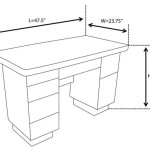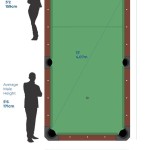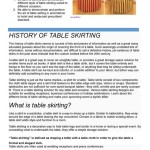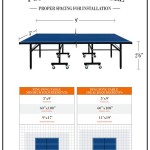How Much Does It Cost to Refelt a Pool Table?
Refelting a pool table is a necessary maintenance task that ensures optimal gameplay and extends the lifespan of the table. The felt, also known as cloth, is the playing surface and is subject to wear and tear from regular use. When the felt becomes worn, torn, or excessively soiled, refelting becomes necessary. Understanding the factors influencing the cost of refelting can help pool table owners budget effectively and choose the right service.
Numerous factors impact the overall cost of refelting a pool table. These include the size of the table, the quality of the felt chosen, the complexity of the table's construction, and the geographical location. Furthermore, whether the owner attempts a DIY refelting project or hires professional installers significantly impacts the financial layout. This article will dissect these various cost components to provide a comprehensive overview of pool table refelting expenses.
Size and Type of Pool Table
The size of a pool table is a primary determinant of the refelting cost. Pool tables are typically measured in feet, with standard sizes being 7-foot, 8-foot, and 9-foot tables. Larger tables require more felt, leading to a higher material cost. The most common residential size is the 8-foot table. A 9-foot table, often found in professional or commercial settings, will demand a significantly larger cut of felt. The larger the pool table, the larger the surface area that needs to be covered, consequently increasing the amount of felt needed.
Beyond size, the type of pool table also affects the cost. Some tables, particularly antique or custom-built models, may have more intricate designs or unconventional rail systems. These features can complicate the refelting process, requiring more time and skill. A simple, modern table with standard rails will be quicker and easier to refelt than a table with ball return systems or other complex elements.
The configuration of the slate also plays a major role. Pool tables can have either a one-piece, two-piece, or three-piece slate. One-piece slate tables are less common and are often found in older or less expensive models. Two-piece and three-piece slate tables are more common in higher-quality tables, with three-piece slates being typically considered the standard for professional play. Refelting a table with multiple slate pieces requires more precision and time, as each piece needs to be carefully leveled and secured. The process of ensuring that the seams between the slates are perfectly aligned to prevent any dead spots or irregularities in gameplay adds another layer of complexity to the refelting process, which consequently affects the overall expense.
Quality and Type of Felt
The quality and type of felt used directly impact the cost of refelting. Pool table felt comes in various grades, ranging from inexpensive blended felts to high-end woolen cloths and premium blends. The material composition, weight, and weave all contribute to the felt's durability, speed, and overall playing characteristics.
Blended felts, often made from a mix of polyester and wool, are the most affordable option. They offer decent durability for recreational use, but they tend to wear out more quickly under heavy play. These felts are often found on entry-level pool tables and are suitable for casual players. The lower price point makes them an attractive option for those on a budget, but the need for more frequent replacement should be factored into the long-term cost.
Worsted wool cloth is a step up in quality. It is a tightly woven, smooth cloth that provides a faster playing surface and better ball control. Worsted cloth is more resistant to wear and tear than blended felts, making it a popular choice for serious players and commercial establishments. Brands like Simonis offer high-quality worsted wool cloth that is known for its durability and consistency. While the initial cost is higher, the extended lifespan and improved playing experience justify the investment for many players.
Felt color is another consideration, although it does not dramatically impact the price. Standard colors like green, blue, and red are typically readily available and cost-effective. Specialty colors may require special ordering and could potentially add to the overall cost. The choice of color is largely a matter of personal preference and aesthetics. However, some players believe that certain colors may affect visibility or perception of the balls, influencing their decision.
Labor Costs and Professional Installation vs. DIY
Whether a pool table owner undertakes a DIY refelting project or hires professional installers significantly impacts the overall cost. Professional installation involves labor charges, which can vary depending on the installer's experience, location, and the complexity of the job. DIY refelting can save on labor costs, but it requires the necessary tools, skills, and time.
Professional installers typically charge an hourly rate or a flat fee for refelting a pool table. The fee usually includes the cost of travel, felt removal, slate leveling, and the installation of the new felt. The complexity of the table and the type of felt being installed can influence the labor cost. An experienced installer can complete the job efficiently and ensure that the felt is properly stretched and secured, resulting in a smooth and consistent playing surface.
DIY refelting can be a cost-effective option for those with some experience in woodworking or upholstery. However, it is important to note that it requires specific tools, such as a staple gun, felt stretcher, and seam roller. The process involves carefully removing the old felt, cleaning the slate surface, applying adhesive, stretching the new felt, and securing it with staples. Mistakes during the process can damage the felt or the table, potentially leading to higher repair costs in the long run. Some individuals may find that hiring a professional is a worthwhile investment to ensure a high-quality result.
One of the significant advantages of professional installation is the expertise in leveling the slate. Ensuring that the slate is perfectly level is crucial for accurate ball roll. Professionals have the tools and knowledge to identify and correct any imperfections in the slate surface. Attempting to level the slate without the proper tools and experience can be challenging and may not yield optimal results. This is especially important for tables with multiple slate pieces, where precise alignment is essential.
Additional Considerations and Potential Hidden Costs
Beyond the core costs of felt and labor, several additional considerations can impact the total expense of refelting a pool table. These factors include the condition of the rails, the need for new bumpers, and any potential repairs to the slate or frame.
Pool table rails are the wooden or composite structures that surround the playing surface. Over time, the rubber bumpers on the rails can harden or crack, affecting the ball's rebound. Refelting is an opportune time to replace the bumpers, as it requires removing the rails anyway. New bumpers can significantly improve the table's playability and extend its lifespan. The cost of new bumpers will vary depending on the quality and type chosen. Some high-end bumpers are designed for professional play and offer superior rebound characteristics.
During the refelting process, it is essential to inspect the slate for any cracks, chips, or unevenness. Minor imperfections can often be repaired with slate filler, but more significant damage may require professional repair or even replacement of the slate. Slate repair can add to the overall cost, but it is crucial for ensuring a smooth and consistent playing surface. Similarly, the frame and legs of the table should be inspected for any signs of damage or instability. Repairs to the frame may be necessary to ensure the table's structural integrity.
Geographical location can also impact the cost of refelting. Labor rates and material costs vary depending on the region. In areas with a higher cost of living, labor charges for professional installation are likely to be higher. Similarly, the availability of specific felt brands or colors may be limited in certain areas, potentially affecting the overall cost.
It's also advisable to request an itemized quote from multiple installers before making a decision. This will provide a clear breakdown of the costs involved and allow for comparison shopping. Inquiring about any potential hidden costs, such as travel fees or disposal fees for old felt, can help avoid unexpected expenses. A comprehensive quote will ensure transparency and allow for informed decision-making.

How Much Does It Cost To Refelt A Pool Table 2024 Data Angi

How Much Does It Cost To Resurface A Pool Table Blatt Billiards

Refelting A Pool Table An Exact How To Diy Guide

How To Refelt A Pool Table 8 Steps Install New Felt Pearson Cues

How Much Does It Cost To Refelt A Pool Table 2024 Data Angi

How To Felt A Pool Table With S Wikihow

Refelting A Pool Table An Exact How To Diy Guide

How To Refelt A Pool Table 8 Steps Install New Felt Pearson Cues

How To Refelt A Pool Table 8 Steps Install New Felt Pearson Cues

Pool Table Refelting San Francisco Felt Replacement Repair Re Tables








